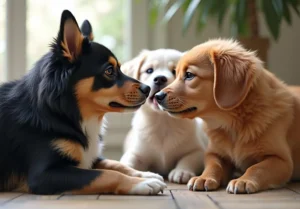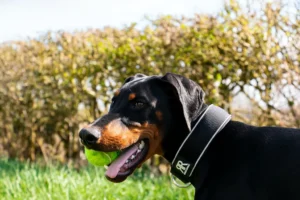Roll up, roll up, dog lovers!
We’ve all marveled at the dazzling performances under the big top, but have you ever stopped to consider the four-legged stars stealing the limelight? Yes, we’re talking about the talented, bright-eyed circus dogs that perform tricks that leave us gaping in awe.
But let’s scratch beneath the surface – what dog breeds often steal the show, and how are they trained to perform those mind-boggling acts? And importantly, what are the health and welfare considerations for these four-legged performers?
And if you’re worried about their wellbeing, we’re here to address your concerns too. We’ve got your backstage pass ready – so stick with us as we pull back the curtain on the wonderful world of circus dogs.

A Quick Look at the Role of Dogs in Circuses
Circus dogs have been doing more than just fetching applause for centuries—they have been etching memories in our hearts.
Their awe-inspiring agility and showmanship doesn’t just entertain, but also highlights an extraordinary display of trust, understanding, and camaraderie between humans and dogs.
Did you know that circuses have been a part of human history for over 2000 years, and dogs, with their diverse range of skills and personalities, have been one of the most constant and beloved participants?
Not every breed, however, is cut out for the high-energy circus ring. From creating human-like pyramids to balancing on moving balls, some dogs do more than just steal the show—they redefine it.
So, which dog breeds are these show-stoppers? Well, let’s take a sneak peek behind the curtain and find out!
Which Dog Breeds Steal the Show in the Circus?
Poodles: The Acrobats of the Canine World
When it comes to circus life, Poodles are arguably the most iconic breed. Renowned for their intelligence, trainability, and athleticism, they can pull off tricks many other breeds wouldn’t dream of.
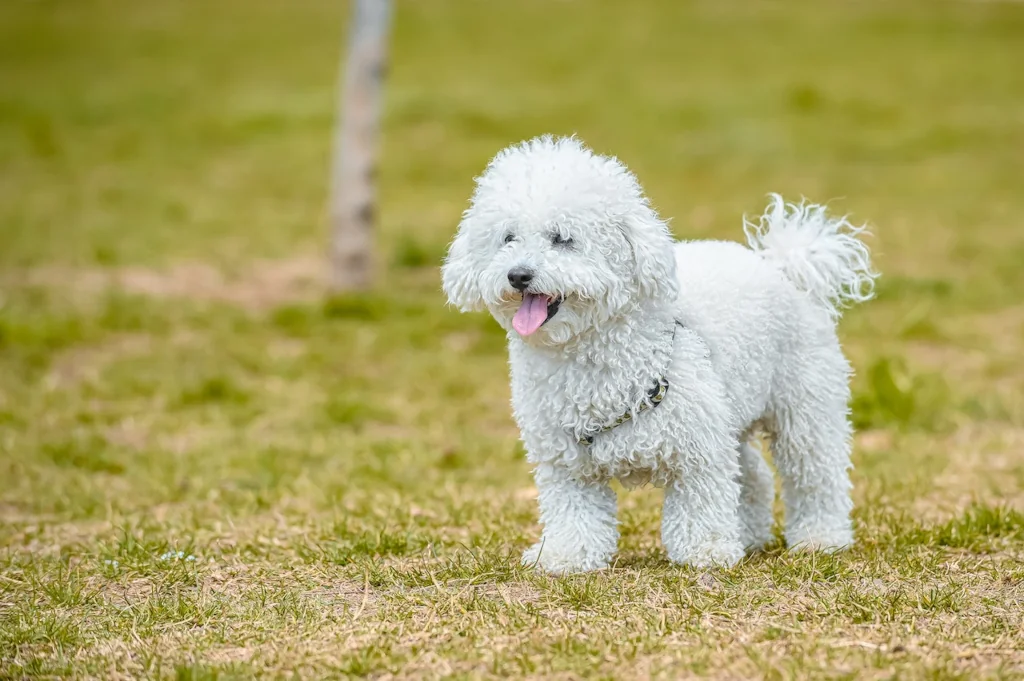
Their iconic fluffy hair isn’t just for show, it’s traditionally shaped to provide protection while allowing for agile movement – perfect for circus performances.
Border Collies: The Trick Masters
Another breed you’ll often see lighting up the circus ring is the Border Collie. Known for their boundless energy and intense drive, these dogs excel at learning and performing a range of tricks.
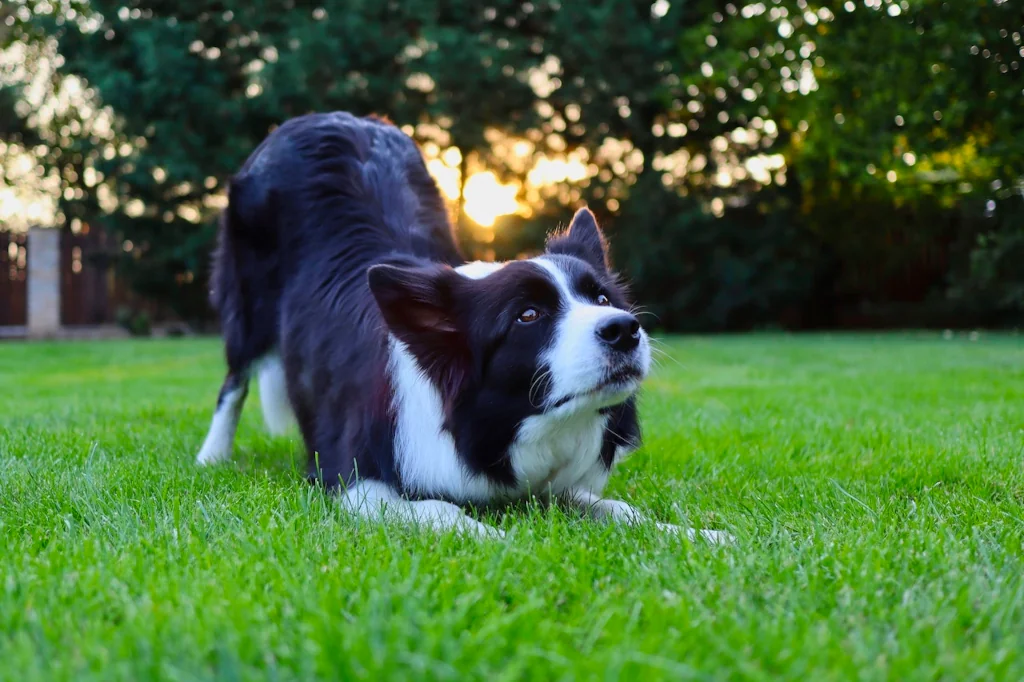
Their herding background makes them a dab hand at managing props and they’re easily trainable, so expect high leaps, tightrope walks, and even bicycle riding from these showstoppers.
Jack Russell Terriers: The Show Stealers
Small but mighty, the Jack Russell Terriers have long been crowd favorites in the circus arena. What they lack in size, they make up for with their bold, fearless personalities and impressive agility.
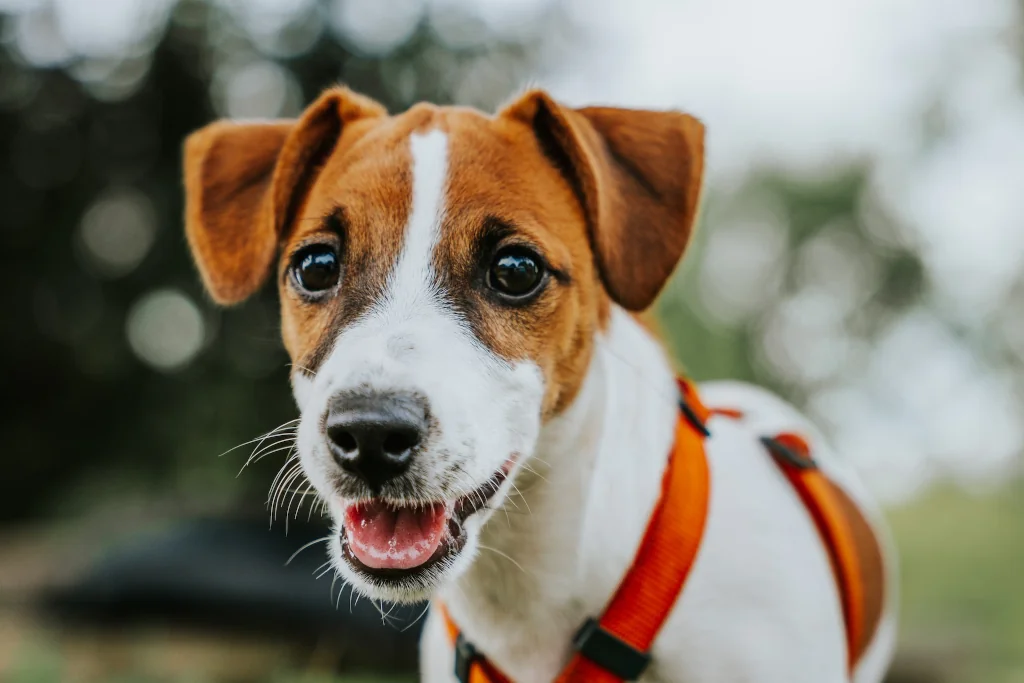
Whether it’s darting through tiny tunnels, standing on their hind legs, or showcasing their impressive jumping ability, these pint-sized performers are always a hit.
Dalmatians: The Majestic Performers
The strikingly beautiful Dalmatians have been circus staples for centuries. Their sleek, muscular build combined with their unique spots make them visually arresting, while their history as carriage dogs ensures they have the discipline to perform in the bustling circus environment.
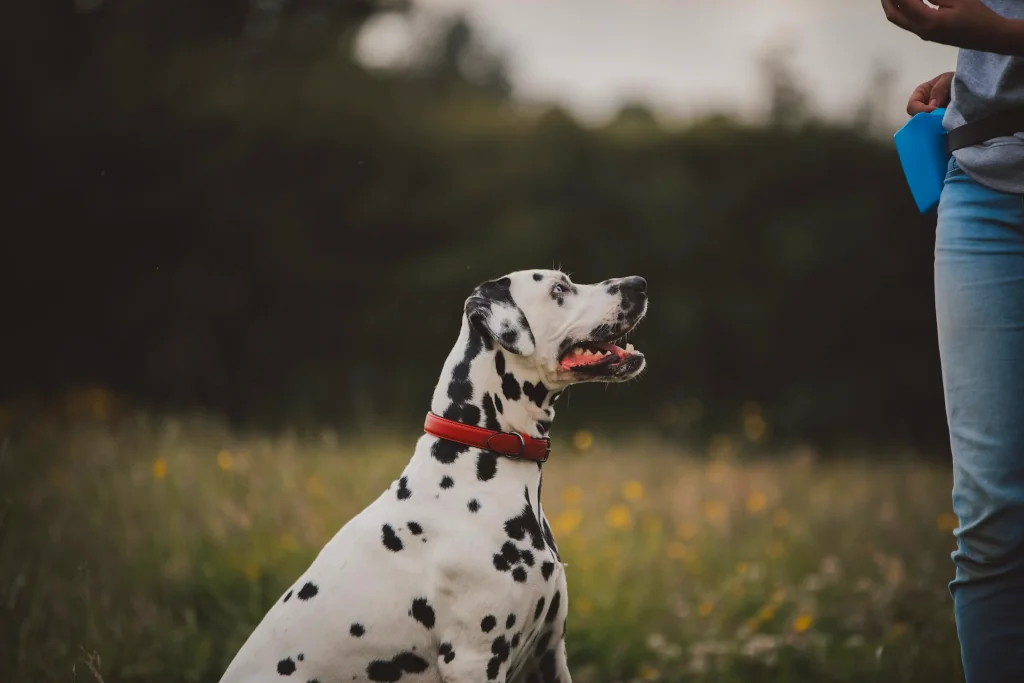
Whether they’re leaping through hoops or showcasing their precise footwork, Dalmatians bring an air of elegance to the circus ring.
Labrador Retrievers: The Versatile Entertainers
Lastly, but certainly not least, Labrador Retrievers have a strong presence in the circus world. Bred to retrieve, they’re natural performers, always eager to learn and impress.

They have a gentle nature, making them excellent partners for acts involving children. Fetching props, balancing balls, or just spreading joy with their friendly demeanor – Labs can do it all!
Remember, while these breeds have traditionally excelled in the circus environment, it’s not just about the breed. A successful circus dog needs the right training, care, and a true bond with its trainer. The physical and mental well-being of the dogs are of paramount importance in ensuring their success and happiness in the circus environment.
The next question is – how do they master these skills? That’s our next stop in this tour of the circus dog world.
How Are Circus Dogs Trained for Their Performances?
Before we dive into the heart of training, it’s important to understand that it’s more than just teaching tricks—it’s about forming an unbreakable bond. Now, let’s uncover the magic behind these astonishing performances.
They Ignite the Trust Spark
The first step in training a circus dog is building a bond of trust. A strong relationship between a dog and their trainer forms the foundation of all subsequent training. This trust is usually established through positive interactions, playing, and basic obedience training.
Crucially, this bonding process should be driven by the dog’s comfort and consent, ensuring that they are happy and willing participants in their training.
Interesting fact: some trainers adopt their dogs when they’re puppies to begin this bonding process as early as possible.
They Speak the Dog Language
Understanding dog psychology and communication is key in training a circus dog. Trainers need to recognize and respect the dog’s individual personality, their breed-specific characteristics, and their general likes and dislikes. This understanding helps in developing a tailored training approach for each dog.
Cool Fact: Trainers often use dogs’ inherent instincts and breed-specific traits to make training enjoyable. For example, Terriers, known for their digging habits, might be trained to “bury” objects as part of their act.
They Know the Magic of Rewards
One of the cornerstones of successful training is positive reinforcement. Whether it’s with treats, toys, praise, or a combination of all three, rewarding a dog immediately after they perform a desired action encourages them to repeat it in the future.
This principle is used for teaching everything from simple commands to complex tricks.
Here’s a pro-tip: using a clicker can make positive reinforcement even more effective! A clicker makes a unique sound, which when consistently paired with a treat, helps the dog understand exactly when they’ve done something right!
Trick Mastery, One Step at a Time
Training circus dogs isn’t an overnight affair. It takes time and patience, with skills being built gradually. Trainers usually start with basic tricks such as sit, stay, and fetch.
As the dog becomes comfortable with these commands, the complexity of the tricks increases incrementally. Jumping through hoops, standing on hind legs, or balancing on a ball often starts with smaller, simpler actions.
Many tricks, even the most complex ones, are rooted in natural dog behaviors. For instance, a ‘play dead’ trick could be an extension of a dog’s instinctive behavior to roll over!
Daily Training Sessions
Regular, daily training sessions help the dog to solidify what they’ve learned and to progress steadily.
However, it’s equally important to avoid overworking the dogs. Training sessions are kept short and sweet, usually around 15 minutes, and they’re always balanced with plenty of playtime and rest.
Interesting Fact: Trainers often schedule training sessions during dogs’ peak activity times – usually in the morning and late afternoon – as dogs tend to learn better when they’re energetic and alert.
Safe Play, Happy Dog
A critical component of training circus dogs is ensuring their health and safety. Trainers take care not to push dogs beyond their physical limits and always keep an eye out for signs of stress or discomfort. Equipment used in training is thoroughly inspected for safety, and the dogs are regularly checked by vets to maintain their health.
Did You Know: Many circus dog trainers are trained in canine first aid. This enables them to promptly and effectively respond to any health emergencies that might occur during a performance. From handling choking incidents to recognizing early signs of a seizure, these trainers are equipped to safeguard the health of their canine stars.
Keep the Tricks Rolling
Finally, training for a circus dog doesn’t end once they’ve mastered their routine. Dogs, like humans, benefit from continuous learning.
New tricks, commands, and routines are introduced regularly to keep the dogs mentally stimulated and engaged.
The benefit? This continuous learning helps keep dogs youthful and agile into their older years, improving their quality of life. It’s similar to how crossword puzzles and memory games can keep our minds sharper as we age.
That’s a glimpse into the fascinating process of training circus dogs. But you might be wondering – how are these stars of the circus ring treated off-stage? Let’s shed some light on that next.
How Are Circus Dogs Treated These Days?
Circus dogs today are seen not just as performers but also as integral members of the circus family. However, it’s crucial to acknowledge the ongoing debate surrounding their treatment.
This debate revolves around key points of contention such as the physical demands placed on performing animals, the ethical considerations of using animals for entertainment, and concerns over whether the animals’ physical and psychological needs can be fully met in a circus environment.
While some circuses have indeed reformed their practices in line with stricter animal welfare laws, ensuring physical health, mental stimulation, and emotional wellbeing, there are still concerns in this field. It’s a reality that conditions can greatly vary from one circus to another, and while many follow a positive reinforcement training model, it’s not universal.
Caring for circus dogs should involve regular health check-ups, balanced diets, adequate rest, and enriching interactions. Unfortunately, this is not always the case, and certain circuses fall short of these standards.
It’s therefore vital that as circus-goers, we remain informed and discerning, supporting those circuses that genuinely prioritize animal welfare, and advocating for improved conditions where needed
Can Any Breed of Dog Be Trained for the Circus?
Any dog breed has the potential to dazzle in the circus ring. However, the type of performance and tricks a dog might excel at often depends on its breed-specific characteristics.
For instance, agile breeds like Border Collies might be great at acrobatics, while intelligent breeds like Poodles can learn and perform complex tricks. Yet, even breeds not typically associated with circus performances can surprise and delight with their unique talents.
The real key to a successful circus dog lies not in its breed, but in its bond with the trainer, the joy it finds in performing, and a commitment to consistent, positive reinforcement training.
But remember, circus training is not for every dog. Individual temperament, health, and comfort are crucial factors to consider before embarking on this journey.
Not all dogs enjoy the limelight, and that’s perfectly okay. Love your furry friend for who they are, because every dog is a star in their own unique way.
FAQs
Do circus dogs live with their trainers?
While some circus dogs may share living quarters with their trainers, this is not a universal practice. The living conditions and arrangements can vary significantly based on the circus, the country, and local animal welfare laws and regulations.
Yes, some breeds might be more susceptible to physical strain due to the demands of circus performances, which could potentially lead to health issues. However, the extent to which these issues are prevented or managed depends on the specific practices of each circus.
Which other animals are commonly used in circuses?
Traditionally, circuses have used a variety of animals, including elephants, horses, lions, and tigers. However, there is an ongoing shift towards animal-free circuses in response to changing attitudes towards animal welfare and new legislation in many regions.
What is the controversy surrounding the use of animals in circuses?
The controversy hinges on ethical and welfare concerns about using animals for entertainment. Despite assurances of good care from some circuses, critics argue that it may not adequately meet animals’ needs. This debate has sparked a trend towards animal-free performances.
What happens to retired circus dogs?
The fate of retired circus dogs can vary widely. While some may continue to live with their trainers or other circus staff members, others might be adopted into private homes, sent to animal sanctuaries or rescue organizations.
Alex, a passionate animal lover, has experience in training and understanding animal behavior. As a proud pet parent to two dogs and three cats, he founded AnimalReport.net to share insights from animal experts and expand his knowledge of the animal kingdom.


